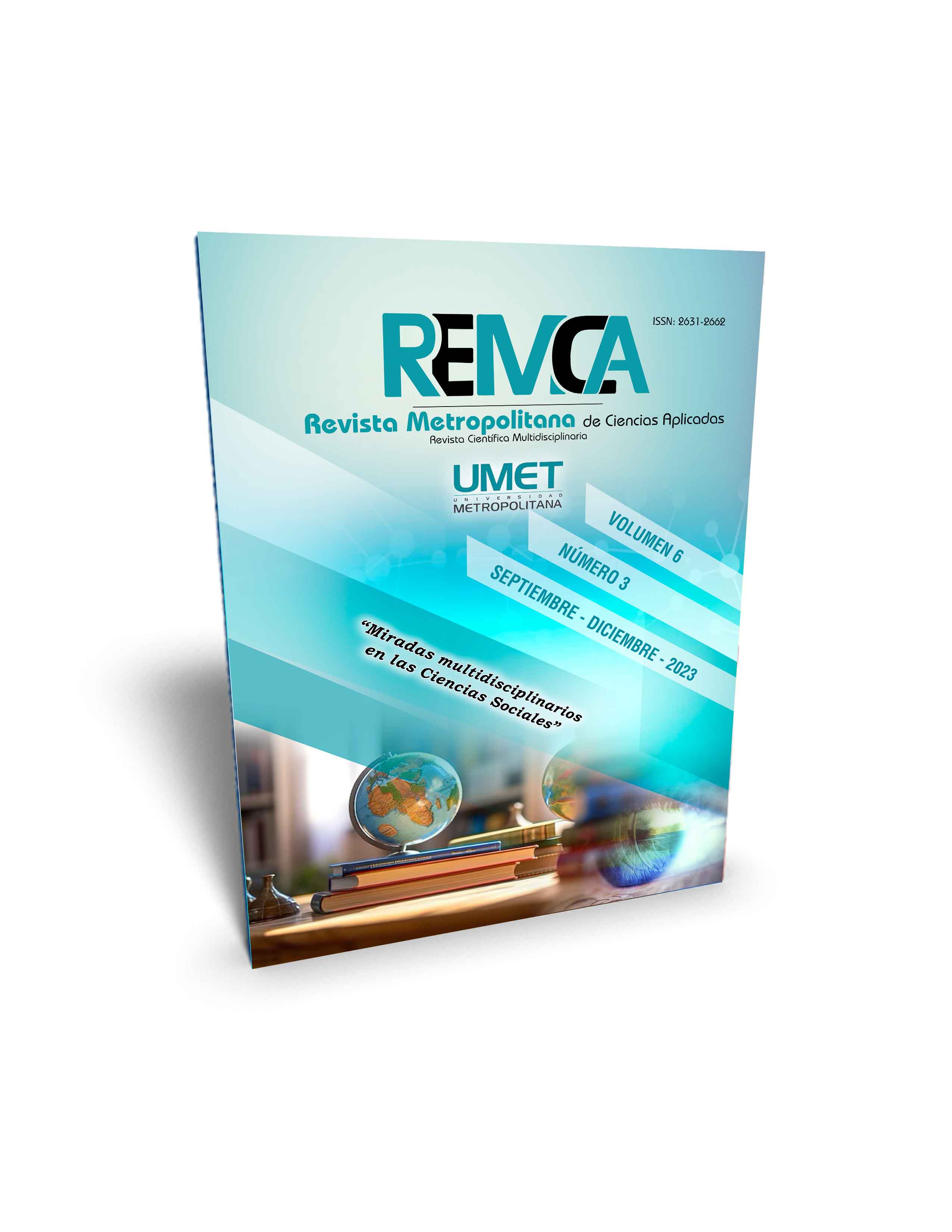Editorial
DOI:
https://doi.org/10.62452/smcymc25Resumen
Estimados lectores:
El presente número, constituye un referente dirigido a ofrecer a la comunidad científica, el conocimiento que se ha
generado sobre diferentes problemáticas del área de ciencias sociales, donde se han planteado consideraciones
epistémicas desde diferentes posturas de abordaje metodológico, que condiciona múltiples miradas de comprensión
y solución alternativa a las problemáticas que emergen del contexto social.
En este número se ofrecen artículos relacionados con temáticas vinculadas a los objetivos de desarrollo sostenible
establecidos por la UNESCO, sobre los procesos académicos formales e informales, consideraciones del derecho y la
jurisprudencia en el ámbito de las exigencias sociales contemporáneas.
Es por ello de gran relevancia hacer notar los estudios que se exponen, como vía para sensibilizar a la comunidad
científica para su revisión y análisis, entre los que se refieren estudios sobre: la “Gestión de Recursos naturales
mediante el análisis sector turístico y minero para el logro del equilibrio ecológico y la sostenibilidad en la provincia El
Oro”, “La danza y el proceso formativo en Colombia”, “Educación formal y no formal en México: análisis comparativo y
perspectivas de mejora”, y “La mediación como mecanismo de justicia restaurativa en el Ecuador.
Así mismo se presentan aportes de gran valor en los estudios sobre la “Biodiversity to guarantee the sustainable
development of fundamental species on Jambelí”, “El derecho constitucional al trabajo frente al servicio de reparto
por medios digitales”, “El Principio de Voluntariedad de la Mediación en los actos notariales”, “Violencia de género en
el ámbito laboral del Gobierno Autónomo Descentralizado del Cantón de Esmeraldas”, “Inverted classroom to teach
and learn the list concept in PROLOG”, “Proposal for the conservation of the Yellow Guayacan and the White-tailed
Deer, in the Arenillas Ecological Reserve“, “Contributions of environmental management to social responsibility and
business competitiveness”, “Principio de congruencia en el proceso penal ecuatoriano”, los cuales sustentan de forma
congruente fundamentos teóricos y metodológicos que permiten ser transferidos en diferentes contextos. Por su parte
los estudios que recuperan las temáticas del “Estrés laboral y desempeño en el personal del hospital San Francisco,
Latacunga”, “La reparación integral en el caso de delitos sexuales”, “La hipoteca como título de ejecución”, “La
formación de mediadores en Ecuador y la perspectiva de género”, abordan temas de gran relevancia en la sociedad
actual.
En este mismo sentido, los artículos titulados “Contribución teórica a la enseñanza del pensamiento conservador
cubano desde la obra de Cosme de la Torriente y Alberto Lamar Schweyer “, “Validación de un instrumento para su
implementación en el proceso de capacitación comunitaria”, “Incidencia de la disfuncionalidad familiar en el bajo
rendimiento académico de las/los estudiantes 4to y 5to semestre de la Carrera de Promoción para la Salud de la Escuela
Superior Politécnica de Chimborazo”, “Socio-spatial Segregation in Machala- Ecuador. An analysis of inequalities
and possible challenges”, “Evaluación educativa y motivación escolar en educación superior” y “Contribución a la
enseñanza de la historia de Cuba desde el acercamiento teórico-conceptual de la Región histórica”.
En general se presentan estudios de gran valor en el ámbito socioeducativo contemporáneo, los cuales enriquecen la
Revista desde una perspectiva multidisciplinar, pues se presentan conocimientos novedosos vinculado a diversidad
de problemáticas internacionales, por lo que les invitamos a todos los lectores y a la comunidad científica en general,
a que realicen un análisis reflexivo de este número, en función de retomar las aportaciones que se abordan en el
contexto de su práctica. Por todo ello se agradece y reconoce a los autores por la contribución de su estudio y por su
preferencia.
Descargas
Descargas
Publicado
Número
Sección
Licencia
Derechos de autor 2023 Maritza Librada Cáceres Mesa (Autor/a)

Esta obra está bajo una licencia internacional Creative Commons Atribución-NoComercial-CompartirIgual 4.0.
Los autores que publican en la Revista Metropolitana de Ciencias Aplicadas (REMCA), están de acuerdo con los siguientes términos:
1. Derechos de Autor
Los autores conservan los derechos de autor sobre sus trabajos sin restricciones. Los autores otorgan a la revista el derecho de primera publicación. Para ello, ceden a la revista, de forma no exclusiva, los derechos de explotación (reproducción, distribución, comunicación pública y transformación). Los autores pueden establecer otros acuerdos adicionales para la distribución no exclusiva de la versión de la obra publicada en la revista, siempre que exista un reconocimiento de su publicación inicial en esta revista.
© Los autores.
2. Licencia
Los trabajos se publican en la revista bajo la licencia de Atribución-NoComercial-CompartirIgual 4.0 Internacional de Creative Commons (CC BY-NC-SA 4.0). Los términos se pueden consultar en: https://creativecommons.org/licenses/by-nc-sa/4.0/deed.es
Esta licencia permite:
- Compartir: copiar y redistribuir el material en cualquier medio o formato.
- Adaptar: remezclar, transformar y crear a partir del material.
Bajo los siguientes términos:
- Atribución: ha de reconocer la autoría de manera apropiada, proporcionar un enlace a la licencia e indicar si se ha hecho algún cambio. Puede hacerlo de cualquier manera razonable, pero no de forma tal que sugiera que el licenciador le da soporte o patrocina el uso que se hace.
- NoComercial: no puede utilizar el material para finalidades comerciales.
- CompartirIgual: si remezcla, transforma o crea a partir del material, debe difundir su creación con la misma licencia que la obra original.
No hay restricciones adicionales. No puede aplicar términos legales ni medidas tecnológicas que restrinjan legalmente a otros hacer cualquier cosa que la licencia permita.




